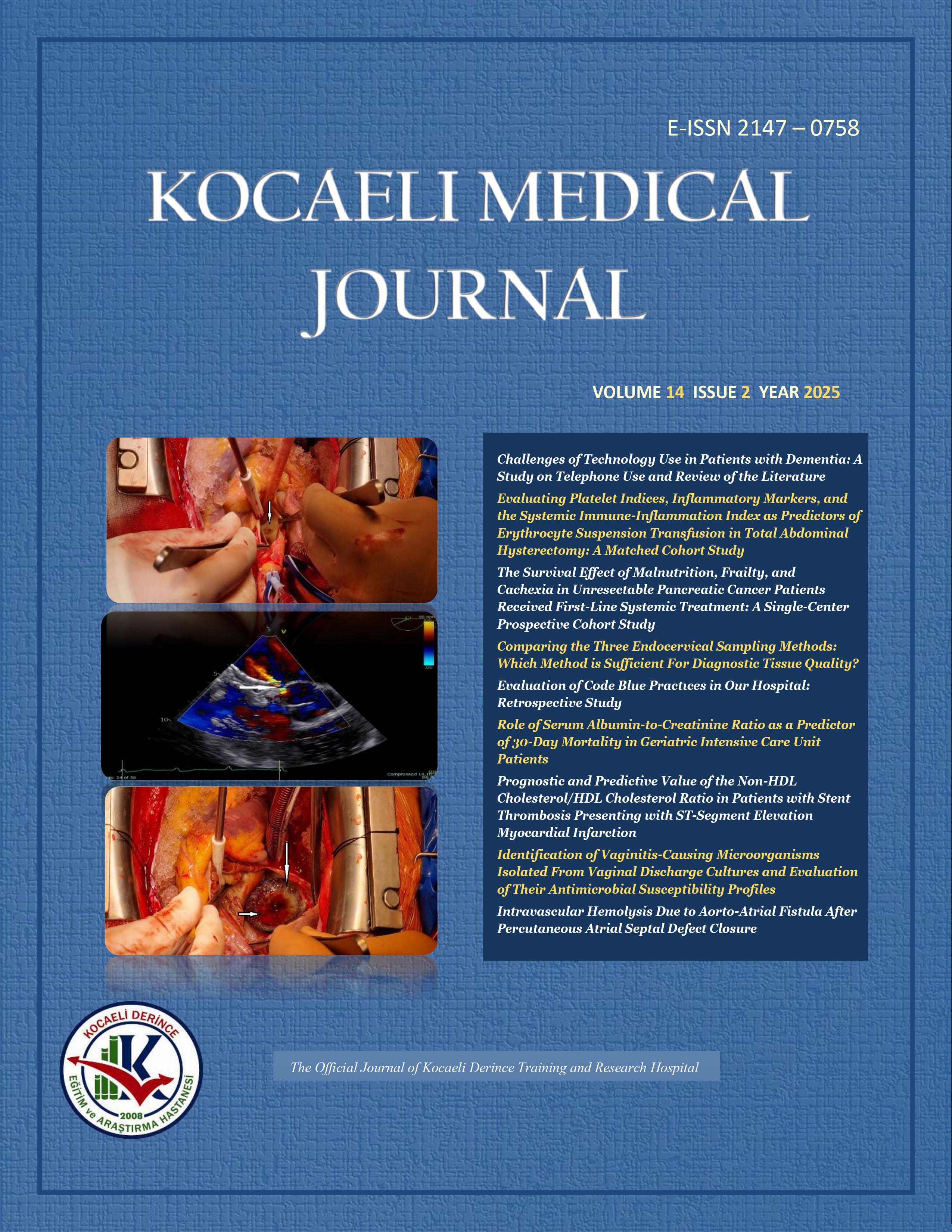
Does Hepaticojejunostomy Anastomosis Technique Have an Effect on Bile Fistula Development?
Orhan Aras, İsmail GomcelıDepartment Of Gastroenterology Surgery, Antalya Training And Research Hospital, Antalya, TurkeyINTRODUCTION: Early or late complications of bilioenteric anastomoses may bring other problems that are difficult to tackle. We aimed to evaluate the effect of anastomosis technique on the formation of bile fistula seen in this spectrum of complications starting from wound infection to liver failure.
METHODS: Patients who underwent hepaticojejunostomy anastomosis due to periampullary region masses, stomach tumor, biliary tract injury between 2013-2019 were grouped according to the preferred anastomosis method.The interrupted suturing technique was preferred in the main bile duct less than 5mm and morbidly obese patients with a diameter of 5 to 7 mm, whereas in other patients, the continuous anastomosis technique was preferred. In patients using continuous technique, basic sutures were added to the area with bile leakage in anastomosis and included in the combined method group. Postoperative leak rates of patients were compared.
RESULTS: 130 patients underwent hepaticojejunostomy anastomosis. The mean age of the patients was 62, of which 54 were men and 76 were women. According to the anastomosis technique applied, the patients were divided into 3 groups with the names of continuous, interrupted suturing and combined method groups. Bile leakage was observed in 5 of 130 patients. In 4 of these patients, continuous suturing method was used in 1. One patient's bile leak could not be brought under control and he needed surgery again.
DISCUSSION AND CONCLUSION: In the evaluation of our study, there are advantages of continuous hepaticojejunostomy anastomosis in patients with a main bile duct larger than 7 mm, and there was no significant difference between early complications..
Hepatikojejunostomi Anastomoz Tekniğinin Safra Fistülü Gelişiminde Etkisi Var Mı?
Orhan Aras, İsmail GomcelıGastroenteroloji Cerrahisi Kliniği, Antalya Eğitim ve Araştırma Hastanesi, Antalya, TürkiyeGİRİŞ ve AMAÇ: Bilioenterik anastomozların erken ya da geç dönem komplikasyonları mücadelesi zor başka sorunları beraberinde getirebilmektedir. Yara yeri enfeksiyonundan başlayıp karaciğer yetmezliğine kadar uzanan bu komplikasyon yelpazesinde görülen safra fistülünün oluşumunda anastomoz tekniğinin etkisini değerlendirmeyi amaçladık.
YÖNTEM ve GEREÇLER: 2013-2019 yılları arasında periampuller bölge kitleleri, mide tümörü, safra yolu yaralanması nedenleri ile hepatikojejunostomi anastomozu uygulanan hastalar tercih edilen anastomoz yöntemine göre gruplandırıldı. 5 mm den küçük ve 5-7 mm arasında ana safra kanalı çapına sahip morbid obez hastalarda tek tek sütürasyon tekniği, diğer hastalarda ise kontiü anastomoz tekniği tercih edildi. Kontinü teknik kullanılan hastalarda anastomozda safra sızıntısı olan alana tek tek sütürasyonlar eklenip kombine yöntem grubuna alındı. Hastaların postoperatif kaçak oranları karşılaştırıldı.
BULGULAR: 130 hastaya hepatikojejunostomi anastomozu uygulandı. Hastaların yaş ortalaması 62 olup 54ü erkek, 76sı kadınlardan oluşmaktaydı. Uygulanan anastomoz tekniğine göre hastalar kontinü, tek tek sütürasyon ve kombine yöntem grupları isimleriyle 3 gruba ayrıldı. 130 hastanın 5inde safra kaçağı görüldü. Bu hastaların 4ünde kontinü 1inde ise tek tek sütürasyon yöntemi uygulandı. 1 hastanın safra kaçağı kontrol altına alınamayıp tekrar ameliyat ihtiyacı oldu.
TARTIŞMA ve SONUÇ: Çalışmamızın değerlendirilmesinde 7 mm den büyük ana safra yoluna sahip hastalarda kontinü hepatikojejunostomi anastomozunun avantajları olup, erken dönem komplikasyonları arasında belirgin fark görülmedi.
Manuscript Language: Turkish












